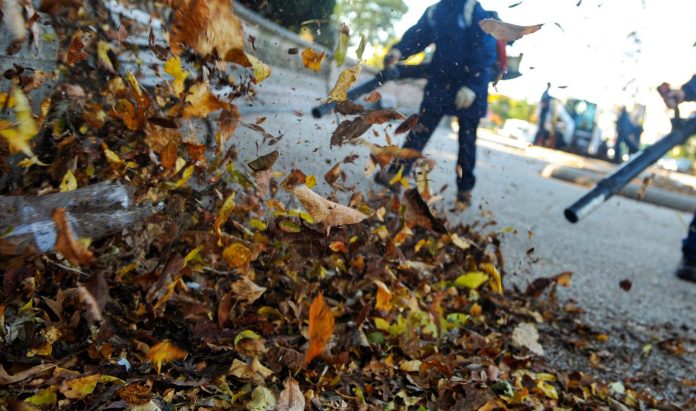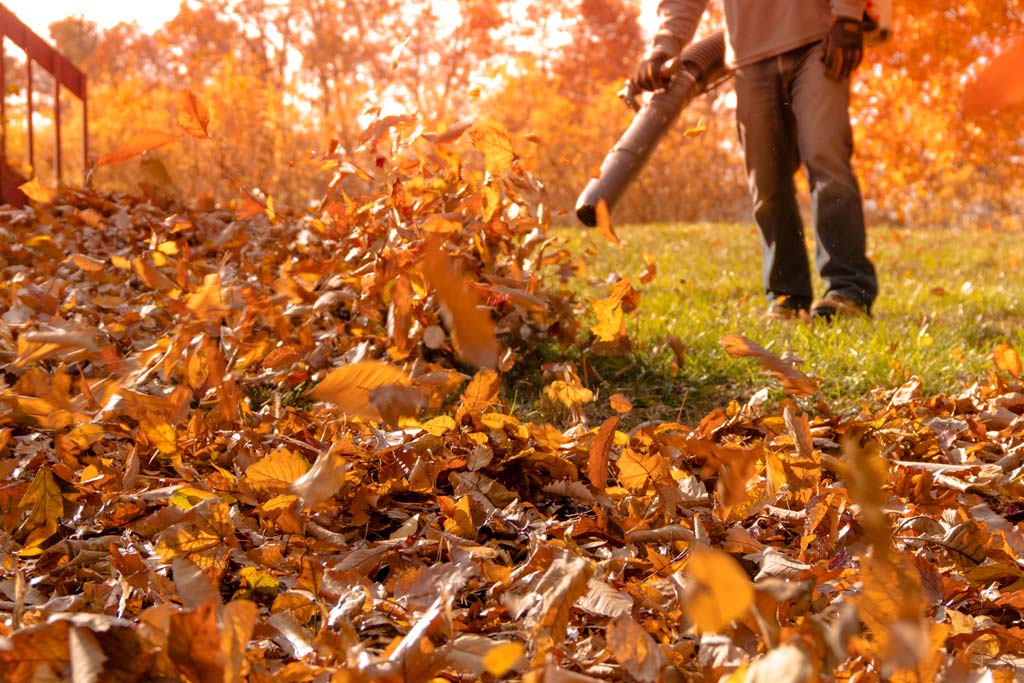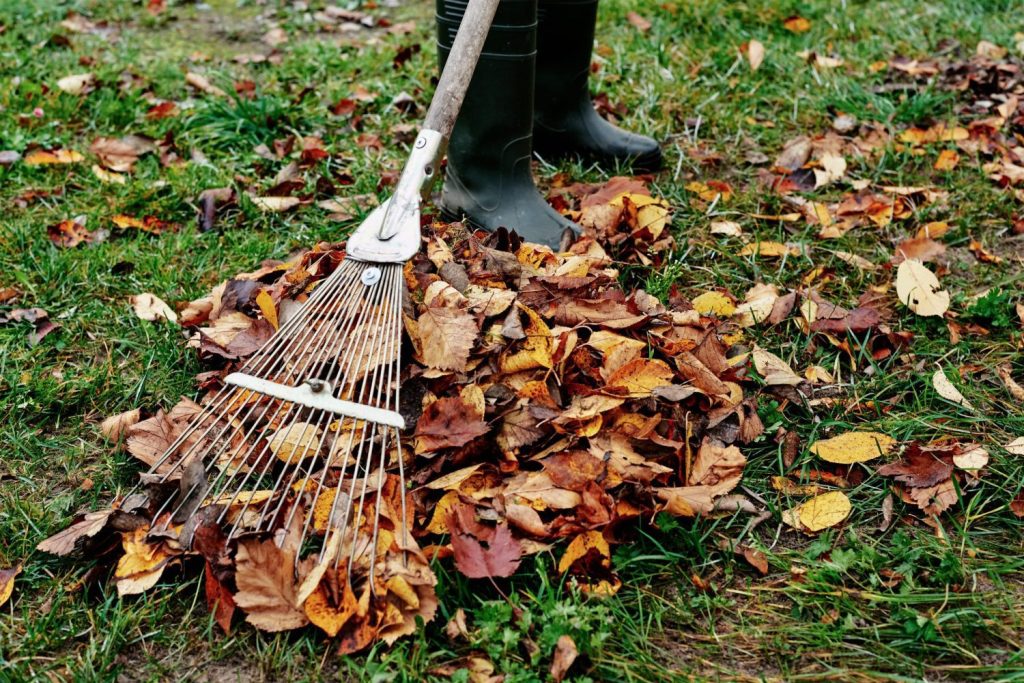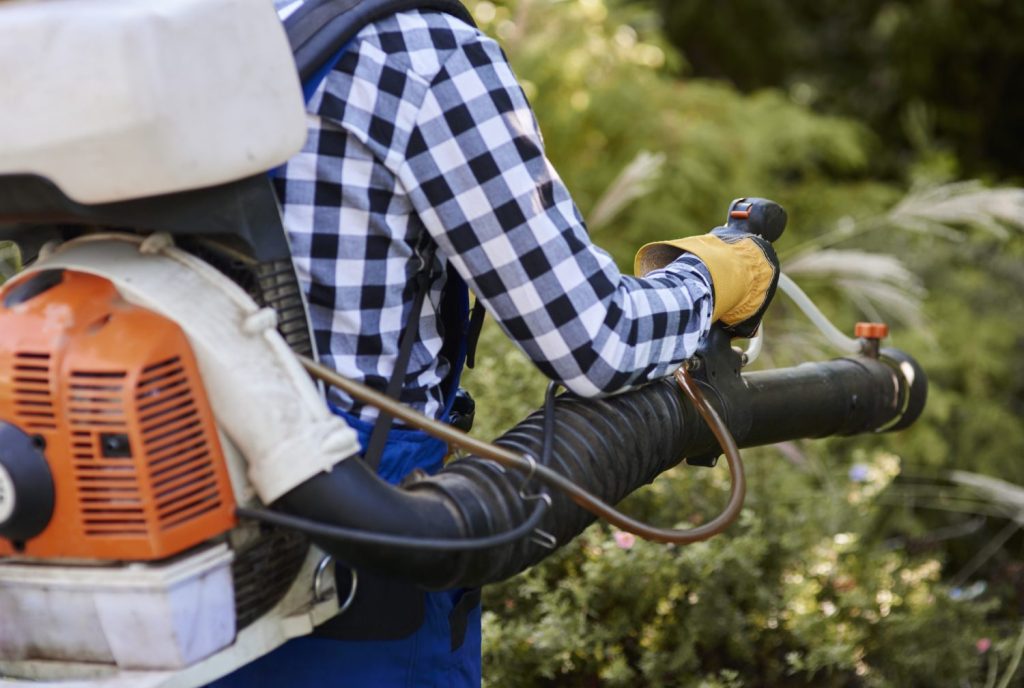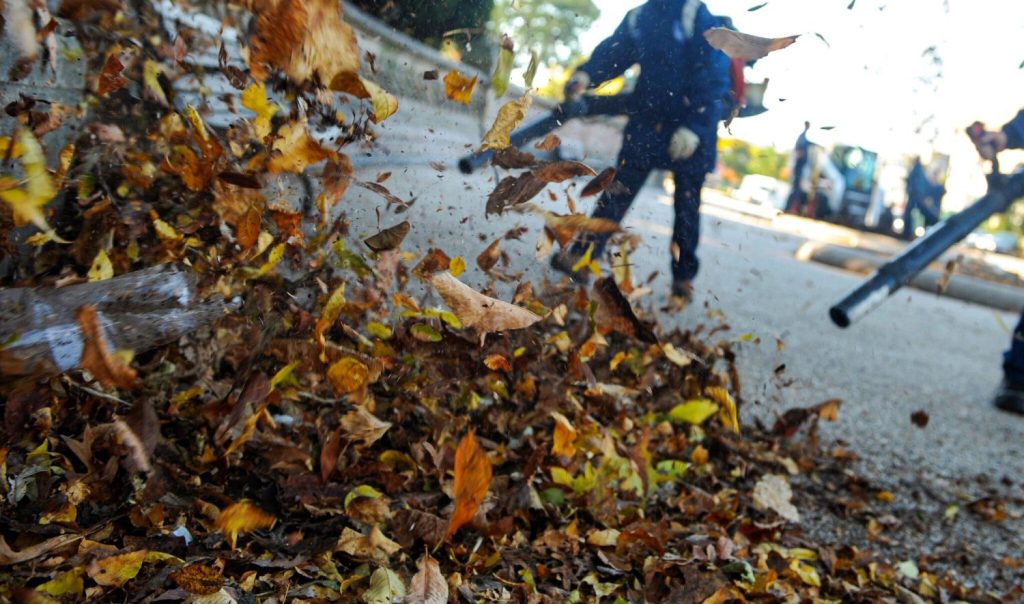Leaf blowers are a common tool for maintaining a tidy outdoor space, but have you ever wondered if they could be harmful to the very plants and grass they aim to clean? In this article, we explore the potential damage that leaf blowers can inflict on our beloved greenery. From the powerful gusts of air to the debris they displace, we’ll uncover the hidden risks and provide insights on how to protect our plants and grass from unintended harm. So, before you rev up that leaf blower again, let’s take a closer look at what it could be doing to our precious vegetation.
This image is property of thediyplan.com.
Introduction
Welcome to our comprehensive guide on the effect of leaf blowers on plants and the environment. As gardening enthusiasts, we understand the importance of maintaining healthy plants and a vibrant ecosystem. Leaf blowers are a common tool used for clearing debris and leaves, but have you ever wondered if they could potentially cause harm to your plants and grass? In this article, we will explore the various ways leaf blowers can impact plant health, the environmental factors that contribute to this, alternative methods for debris removal, and how to care for your plants after using a leaf blower. So, let’s dive in and discover the potential effects of leaf blowers on plants and grass.
Effect of Leaf Blowers on Plants
Direct Impact on Plant Tissues
One of the primary concerns when it comes to leaf blowers is the direct impact on delicate plant tissues. The high-speed air expelled by leaf blowers can cause damage to leaves, flowers, and buds. The forceful wind can result in tears, bruising, or even detachment of these plant structures. This damage may compromise the plant’s ability to photosynthesize, leading to reduced growth and overall plant health.
Dislodging of Soil and Nutrients
The powerful gusts of wind produced by leaf blowers can dislodge soil particles and essential nutrients from the ground. This can have a significant impact on the plant’s ability to absorb water and nutrients, as well as its overall root health. Soil erosion caused by leaf blowers can lead to nutrient depletion, which can stunt plant growth and compromise their resilience to pests and diseases.
Damage to Roots
Roots play a crucial role in plant stability and nutrient absorption. When using leaf blowers near plants, the forceful wind can damage the delicate root systems. It can cause roots to become dislodged, crushed, or even fractured. Such damage to the roots can impede the plant’s ability to take up water and nutrients from the soil, resulting in wilting or stunted growth.
Disruption of Natural Growth Patterns
The continuous use of leaf blowers near plants can disrupt their natural growth patterns. Plants rely on air movement to strengthen their stems and promote healthy growth. However, excessive and prolonged exposure to strong winds generated by leaf blowers can cause plants to develop a lean towards the direction of the wind, compromising their natural upright growth. This can lead to an imbalance in the distribution of nutrients and hinder their overall development.
Environmental Factors
Wind Speed
The wind speed produced by leaf blowers can greatly impact their potential damage to plants. Higher wind speeds are more likely to cause physical harm to delicate plant structures. It’s essential to consider the wind speed settings of the leaf blower and avoid using high speeds close to vulnerable plants.
Leaf Blower Design
The design and efficiency of a leaf blower also play a role in its impact on plants. Some leaf blowers are designed to maximize airflow and output, which can result in stronger gusts of wind. Opting for leaf blowers with adjustable speed settings or lower air velocity can help minimize the potential damage to plants.
Frequency and Duration of Use
Another important factor to consider is the frequency and duration of leaf blower use. The more frequently a leaf blower is used near plants, the higher the risk of damage. Similarly, if a leaf blower is used for an extended period, plants may experience prolonged exposure to the disruptive effects of the blowing wind.
Distance from Plants
Maintaining an appropriate distance between the leaf blower and plants is crucial to minimize damage. The forceful air generated by the leaf blower loses strength as it travels away from the nozzle. Keeping a reasonable distance ensures that plants are subjected to less intense wind speeds, reducing the potential for harm.
Types of Leaf Blowers
Handheld Leaf Blowers
Handheld leaf blowers are lightweight and easy to maneuver. They are suitable for small gardens or areas with limited debris. These leaf blowers commonly operate on gasoline or electricity and offer moderate air velocity, making them less likely to cause significant damage to plants when used correctly.
Backpack Leaf Blowers
Backpack leaf blowers are equipped with a backpack-like harness, perfect for users who need to cover large areas or work for extended periods. These blowers offer higher air velocities and can clear larger amounts of debris efficiently. To minimize potential damage, it’s crucial to adjust the blower’s speed according to the surrounding vegetation and maintain an appropriate distance from plants.
Walk-behind Leaf Blowers
Walk-behind leaf blowers are designed for heavy-duty debris clearing in large areas. These blowers are often self-propelled and feature higher air velocities. When using walk-behind leaf blowers, it is essential to exercise caution as the forceful wind produced can significantly impact nearby vegetation. Adjusting the speed and maintaining distance from plants is vital to prevent damage.
This image is property of soilsalive.com.
Best Practices to Minimize Damage
Adjusting Blower Speed
One of the best practices to minimize potential damage to plants is to adjust the blower speed according to the surrounding vegetation. Lowering the speed reduces the force of the wind and decreases the likelihood of damaging delicate plant structures.
Using Leaf Vacuum Feature
Some leaf blowers are versatile and have a leaf vacuum feature. Instead of blowing leaves and debris, they can be switched to a vacuum mode. This feature allows you to collect debris without generating potentially harmful gusts of wind. Utilizing the leaf vacuum feature is an excellent alternative for areas with sensitive plants.
Using Leaf Blower Attachments
Leaf blower attachments, such as wide nozzles or diffusers, can help disperse the air over a larger area, reducing the intensity of the wind. These attachments can help minimize damage to plants by distributing the airflow more evenly.
Maintaining Proper Distance
As mentioned earlier, maintaining an appropriate distance between the leaf blower and plants is crucial. Aim to keep a distance of at least a few feet to ensure the force of the wind diminishes before reaching the plants. This will help prevent direct impact and minimize damage.
Avoiding Use in Extreme Conditions
Avoiding the use of leaf blowers in extreme weather conditions can significantly reduce the risk of damage to plants. Extremely windy or dry conditions can amplify the negative effects of leaf blowers on plant health. It’s best to wait for more favorable conditions before using leaf blowers near plants.
Alternatives to Leaf Blowers
Raking
One of the oldest and most reliable methods for debris removal is raking. Raking not only helps clear leaves and debris but also provides an excellent opportunity for some physical exercise. This method is gentle on plants and does not generate any harmful wind. However, it may be time-consuming, especially for larger areas.
Push Brooms
Push brooms are another alternative to leaf blowers. They are effective in clearing small to medium-sized areas and are readily available. Push brooms allow for precise debris removal while minimizing the disturbance to nearby plants. This method can be labor-intensive but offers a gentle and environmentally-friendly option.
Leaf Vacuums
Leaf vacuums combine the functions of a leaf blower and a vacuum. These machines are equipped with suction tubes that allow for quick and efficient debris collection without expelling high-speed winds. Leaf vacuums are particularly useful for areas with a high concentration of leaves and are less likely to cause damage to plants when used correctly.
Lawn Sweepers
Lawn sweepers are mechanical devices that can be attached to a garden tractor or pushed manually. They feature rotating brushes that pick up leaves and debris from the ground, depositing them into a collection bag. Lawn sweepers are ideal for larger areas and efficiently gather debris without generating any wind. This method is gentle on plants and provides an efficient alternative to leaf blowers.
This image is property of soilsalive.com.
Caring for Plants After Leaf Blowing
Watering
After using a leaf blower, it’s crucial to water the plants thoroughly. Watering helps replenish moisture lost due to the force of the wind, promotes root recovery, and alleviates any stress caused by the leaf blower. Ensure adequate watering to maintain the plant’s hydration levels and support their overall recovery.
Fertilizing
Applying a balanced fertilizer after leaf blowing can help replenish any nutrients that may have been dislodged from the soil. Fertilizing provides essential nutrients necessary for healthy plant growth and aids in their recovery from potential leaf blower damage. Consult with a local gardening expert or follow the instructions on the fertilizer packaging for best results.
Applying Mulch
Mulching the soil around plants helps retain moisture, regulate soil temperature, and suppress weeds. Applying a layer of organic mulch after leaf blowing not only enhances the overall appearance of the garden but also provides a protective barrier for the plants. Mulching can aid in their recovery by creating an optimal environment for root growth and nutrient absorption.
Protecting from Extreme Weather
Extreme weather conditions, such as high temperatures or heavy rainfall, can further stress plants that have been exposed to leaf blowers. Take additional precautions to protect your plants during such periods. Providing shade, using mulch, or installing temporary protective covers can help shield plants from excessive heat, water, or wind, allowing them to recover more effectively.
Common Signs of Leaf Blower Damage
Yellowing or Browning of Leaves
One of the common signs of leaf blower damage is the yellowing or browning of leaves. Damage to leaf tissues caused by the forceful wind can disrupt their normal functioning, resulting in discoloration. If you notice these symptoms after using a leaf blower, it’s important to take immediate action to aid in the plant’s recovery.
Wilting or Stunted Growth
Wilting or stunted growth can also be indicative of leaf blower damage. The disruption to the plant’s root system can impair its ability to absorb water and nutrients, leading to wilting or reduced growth. Regular monitoring of your plants’ health can help identify early signs of damage and prompt appropriate care.
Root Damage
Root damage may be less visible, but its impact on plant health can be significant. When using leaf blowers near plants, careful attention must be paid to the root zone to avoid any disturbance. If you suspect root damage, consult with a gardening professional for guidance on recovery measures.
Erosion or Soil Compaction
Leaf blowers, particularly in frequent or prolonged use, can contribute to soil erosion or compaction. Signs of erosion include exposed roots or barren patches in the soil. Soil compaction can result in poor drainage and air circulation within the root zone. It’s essential to take prompt action to remedy these issues to ensure the long-term health of your plants.
This image is property of www.drweil.com.
Preventing Leaf Blower Pollution
Using Electric Leaf Blowers
One way to mitigate the environmental impact of leaf blowers is by using electric leaf blowers. Electric leaf blowers reduce noise and eliminate emissions, making them a greener alternative. These models typically operate on batteries or cords and can be an excellent choice for small to medium-sized gardens.
Choosing Battery-powered or Cordless Models
Battery-powered or cordless leaf blowers offer greater freedom of movement compared to corded models. These leaf blowers are generally lightweight and produce lower noise levels. They are a suitable option for those seeking more convenience while minimizing pollution and environmental impact.
Regular Maintenance
Regular maintenance of your leaf blower is essential to ensure optimal performance and minimize emissions. Keep the blower clean, check for any leaks, and replace worn-out parts promptly. Regularly inspecting and tuning the leaf blower helps reduce pollution and ensures its efficient operation.
Proper Fuel Handling
For gasoline-powered leaf blowers, proper fuel handling is crucial in minimizing pollution. Use approved fuel containers, follow fuel mixing instructions accurately, and dispose of any excess fuel responsibly. By adhering to fuel handling best practices, you reduce the chances of accidental spills and limit environmental pollution.
Conclusion
While leaf blowers can be an effective tool for debris removal, it is important to be mindful of their potential effects on plant health and the environment. Understanding the direct impact on plant tissues, dislodging of soil and nutrients, and disruption of natural growth patterns allows us to take the necessary precautions to minimize damage. By considering environmental factors, adjusting blower speed, and using the appropriate equipment and techniques, we can ensure the well-being of our plants while maintaining a clean and tidy outdoor space. Remember to monitor your plants for signs of damage, provide the necessary care, and explore alternative methods for debris removal when appropriate. Let’s strive for a harmonious balance between our gardening needs and the health of our plants and ecosystems.
This image is property of static01.nyt.com.

